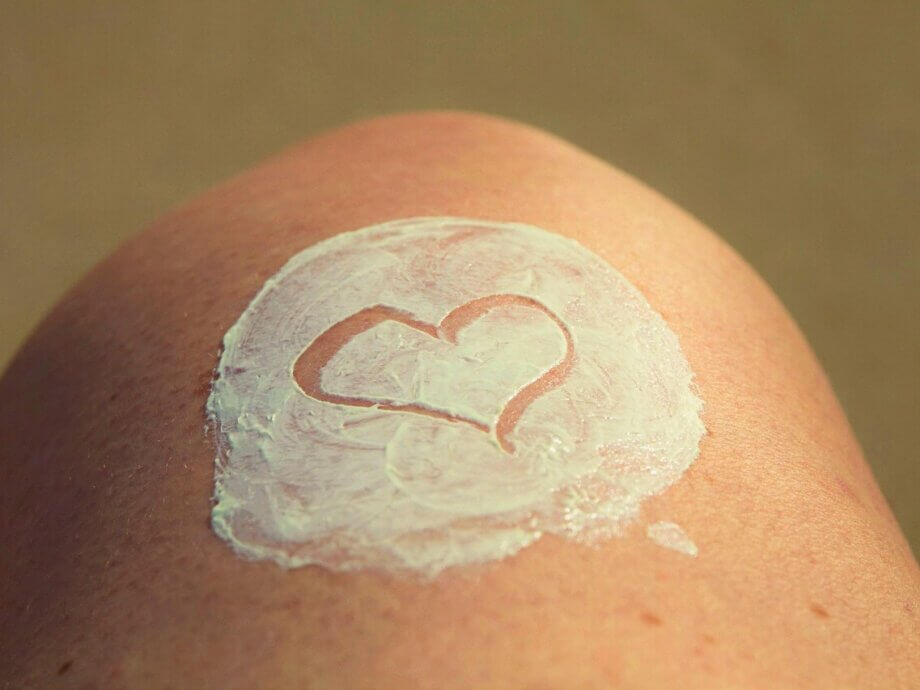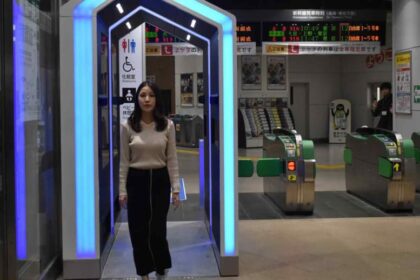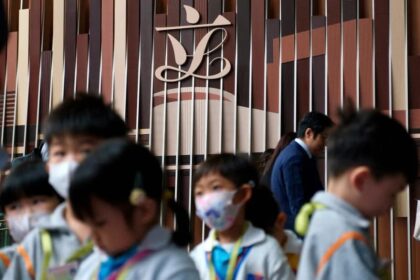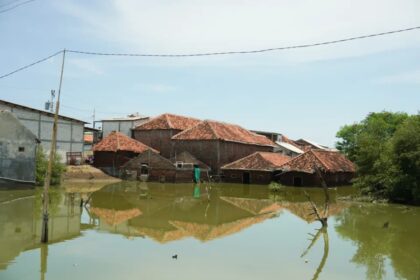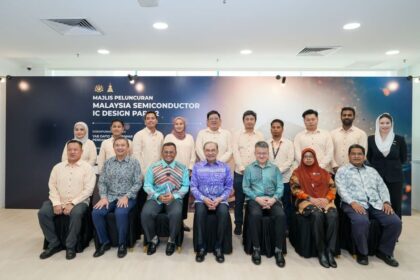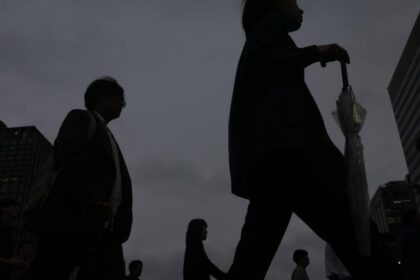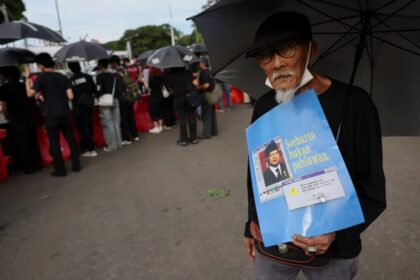Japanese Sunscreens: The New Global Skincare Obsession
Japanese sunscreens have become a global sensation, captivating skincare enthusiasts and influencers alike with their innovative formulas and lightweight textures. This surge in popularity is not just a fleeting trend—it reflects deeper shifts in beauty standards, health awareness, and international business strategies. As Japanese companies expand their reach, including the construction of new factories in Indonesia, Brazil, and Germany, the world is taking notice of what makes Japanese sun protection so unique.
- Japanese Sunscreens: The New Global Skincare Obsession
- What Sets Japanese Sunscreens Apart?
- The Cultural Roots of Sun Protection in Japan
- Influencers, Social Media, and the Global Boom
- Japanese Brands Leading the Charge
- Why Indonesia? The Strategic Expansion of Japanese Factories
- Innovation at the Heart of Japanese Sunscreens
- Consumer Trends: From Japan to the World
- The Competitive Landscape: Global and Local Players
- Health, Beauty, and the Future of Sun Protection
- In Summary
The story of this phenomenon is best illustrated by YouTuber Hannah Price, whose viral video comparing Japanese and Australian sunscreens has garnered over two million views. Price’s journey into the world of SPF science, cultural attitudes, and product innovation highlights the growing global fascination with Japanese skincare, echoing the earlier K-beauty wave from South Korea.
What Sets Japanese Sunscreens Apart?
Japanese sunscreens are celebrated for their lightweight, non-greasy feel and advanced protection against ultraviolet (UV) rays. Unlike many Western sunscreens, which are often described as thick or sticky, Japanese formulas are designed to be comfortable for daily use—even under makeup or in humid climates.
This focus on texture and efficacy is the result of decades of research and development. Companies like Shiseido and Kao have invested heavily in scientific innovation, striving to create products that offer both high protection and a pleasant user experience. Takashi Fukui, research and development director for Kao skincare products, explains that achieving this balance is technically challenging:
“It is technically difficult to develop formulas that block the rays effectively with a smooth texture, as demanded by Japanese consumers. But using scientific know-how to strike this tricky balance is what makes Kao different from other European or American makers.”
Japanese brands have also pioneered technologies such as Aqua Booster and Auto Booster, which enhance UV protection when exposed to water, sweat, or heat—making them ideal for active lifestyles and tropical climates.
The Cultural Roots of Sun Protection in Japan
The Japanese obsession with sun protection is deeply rooted in history. Since the sixth century, fair skin has been associated with beauty and social status. White powder, imported from China, became a symbol of nobility, and an old Japanese proverb claims, “white skin covers the seven flaws.”
In the 1990s, the trend known as “bihaku” (beautifully white) saw a surge in the use of sunscreens and other cosmetics to avoid tanning. Today, daily sunscreen use is common among Japanese women, who seek to prevent sunspots, premature aging, and other effects of UV exposure. This cultural preference for fair, unblemished skin has driven demand for high-performance sun protection products.
Influencers, Social Media, and the Global Boom
The rise of Japanese sunscreens is closely tied to the power of social media. Platforms like Instagram, TikTok, and YouTube have enabled influencers to share their skincare routines and product recommendations with millions of followers worldwide. Takuya Wada, a marketing executive at Kao, notes:
“There are no borders when it comes to obtaining information on social media, especially Instagram and TikTok. Influencer posts have a very large impact on global sunscreen sales.”
Celebrity endorsements and viral reviews have fueled the global skincare market, which was valued at over $115 billion in 2024 and is projected to reach $194 billion by 2032, according to Fortune Business Insights. A-listers like Kylie Jenner have further amplified the importance of sun protection as part of daily beauty routines.
Japanese Brands Leading the Charge
Several Japanese brands have become household names in the sunscreen market, both domestically and internationally. Among the most prominent are:
- Biore UV (Kao): Ranked 10th worldwide for sunscreen sales and second in Asia, Biore UV is known for its innovative, lightweight formulas and broad-spectrum protection.
- Anessa (Shiseido): With over 100 years of UV research, Anessa has been the top-selling sunscreen brand in Japan for 21 consecutive years. Its products feature advanced technologies like Auto Booster and Triple Defense, offering enhanced protection in response to heat, humidity, and water.
- Skin Aqua: Popular for its UV Moisture Milk, Skin Aqua is praised for its easily absorbed, non-sticky texture—ideal for tropical climates like Indonesia.
- Shiseido: Beyond Anessa, Shiseido’s broader skincare line is renowned for its holistic approach and cutting-edge research.
Other notable Japanese brands making waves in Indonesia and beyond include SK-II, DHC, Hada Labo, Kanebo, Hatomugi, Makanai, and Kose. These brands are recognized for their use of natural ingredients, gentle formulations, and commitment to continuous innovation.
Why Indonesia? The Strategic Expansion of Japanese Factories
Indonesia has emerged as a key market for Japanese sunscreen manufacturers. The country’s sunscreen market has been growing at an average annual rate of 10%, with projections of 14% growth in the coming years. By 2023, the market was estimated to reach 262.5 billion rupiah, driven by increased awareness of skin health, rising incomes, and the country’s tropical climate.
Several factors make Indonesia an attractive destination for Japanese factories:
- High UV Exposure: With year-round sunshine and a large population of motorcycle riders, Indonesians are particularly vulnerable to UV radiation. Sunscreen is seen as essential for daily protection.
- Urbanization and Lifestyle: Urban office workers, who spend time both indoors and outdoors, are increasingly seeking effective sun protection. The popularity of SPF 50+ products reflects this demand.
- Market Diversity: Indonesian consumers are open to international brands and innovative formulations, especially those that offer added skincare benefits or address specific needs like sensitive skin or brightening.
Japanese companies like Kao and Shiseido are responding by building local production facilities, which allow them to tailor products to regional preferences, reduce costs, and ensure a steady supply for the rapidly growing market.
Innovation at the Heart of Japanese Sunscreens
What truly distinguishes Japanese sunscreens is their relentless pursuit of innovation. For example, Anessa’s Auto Booster Technology automatically strengthens UV protection when exposed to water, sweat, or heat—perfect for Indonesia’s humid climate. The Triple Defense Technology and Sun Dual Care further enhance protection and provide skincare benefits like hydration, improved skin barrier function, and reduction of fine lines.
Many Japanese sunscreens also contain a high percentage of skincare ingredients—up to 50% in some Anessa products—making them suitable for daily use without causing irritation or clogging pores. Formulations are often free from artificial fragrances and colors, catering to sensitive skin types.
These technological advancements are not limited to premium brands. Even mass-market products like Biore UV Aqua Rich Watery Essence have gone viral for their pleasant feel and reliable protection, earning rave reviews from influencers and dermatologists alike.
Consumer Trends: From Japan to the World
The adoption of Japanese sunscreens is not confined to Japan or Indonesia. Tourists visiting Japan often buy these products in bulk, and international demand has led to the proliferation of Japanese brands in drugstores and online retailers worldwide.
In Indonesia, Japanese sunscreens are especially popular among young consumers and social media users. Reviews highlight their lightweight feel, effectiveness, and suitability for the local climate. The growing number of male customers and parents seeking sun protection for children further illustrates the broadening appeal of these products.
As the market matures, consumers are becoming more discerning, seeking sunscreens that offer not just protection but also additional skincare benefits, environmental sustainability, and innovative application methods (such as sprays, gels, and serums).
The Competitive Landscape: Global and Local Players
While Japanese brands are gaining ground, they face stiff competition from established Western and Korean companies. L’Oreal, Beiersdorf (Nivea), and Bioderma are major international players, while Korean brands have rapidly increased their market share in Indonesia, accounting for over 10% of imports in recent years.
To stay ahead, Japanese manufacturers emphasize product originality, advanced technology, and the ability to address specific consumer needs—such as sunburn relief, skin tone correction, and compatibility with sensitive skin. Local Indonesian brands, though less diverse, are also innovating to capture a share of the growing market.
Health, Beauty, and the Future of Sun Protection
The global shift toward daily sun protection is driven by both health and beauty concerns. In Western countries, rising awareness of skin cancer risks has made sunscreen an essential healthcare product. In Asia, the focus is often on preventing pigmentation, aging, and maintaining a fair complexion.
Experts agree that regular sunscreen use is one of the most effective ways to protect skin from UV damage, premature aging, and even DNA mutations that can lead to cancer. The education and advocacy efforts of influencers, dermatologists, and brands are helping to normalize sunscreen as a daily necessity rather than a seasonal accessory.
As Hannah Price, the YouTuber whose video sparked global discussion, observes:
“The rise in education about sunscreens worldwide means you’re going to be better protected in general, which is great for everyone.”
In Summary
- Japanese sunscreens are leading a global skincare craze, thanks to their lightweight textures, advanced technology, and cultural emphasis on sun protection.
- Social media influencers and celebrity endorsements have played a major role in popularizing Japanese brands worldwide.
- Major Japanese companies like Kao and Shiseido are expanding production to Indonesia, Brazil, and Germany to meet growing international demand.
- Indonesia’s sunscreen market is booming, driven by high UV exposure, urban lifestyles, and consumer openness to innovative products.
- Japanese sunscreens stand out for their scientific innovation, high skincare content, and suitability for diverse climates and skin types.
- The global sunscreen market is becoming more competitive, with Japanese, Korean, Western, and local brands all vying for consumer attention.
- Regular sunscreen use is increasingly recognized as essential for both health and beauty, with education and product innovation driving adoption worldwide.


